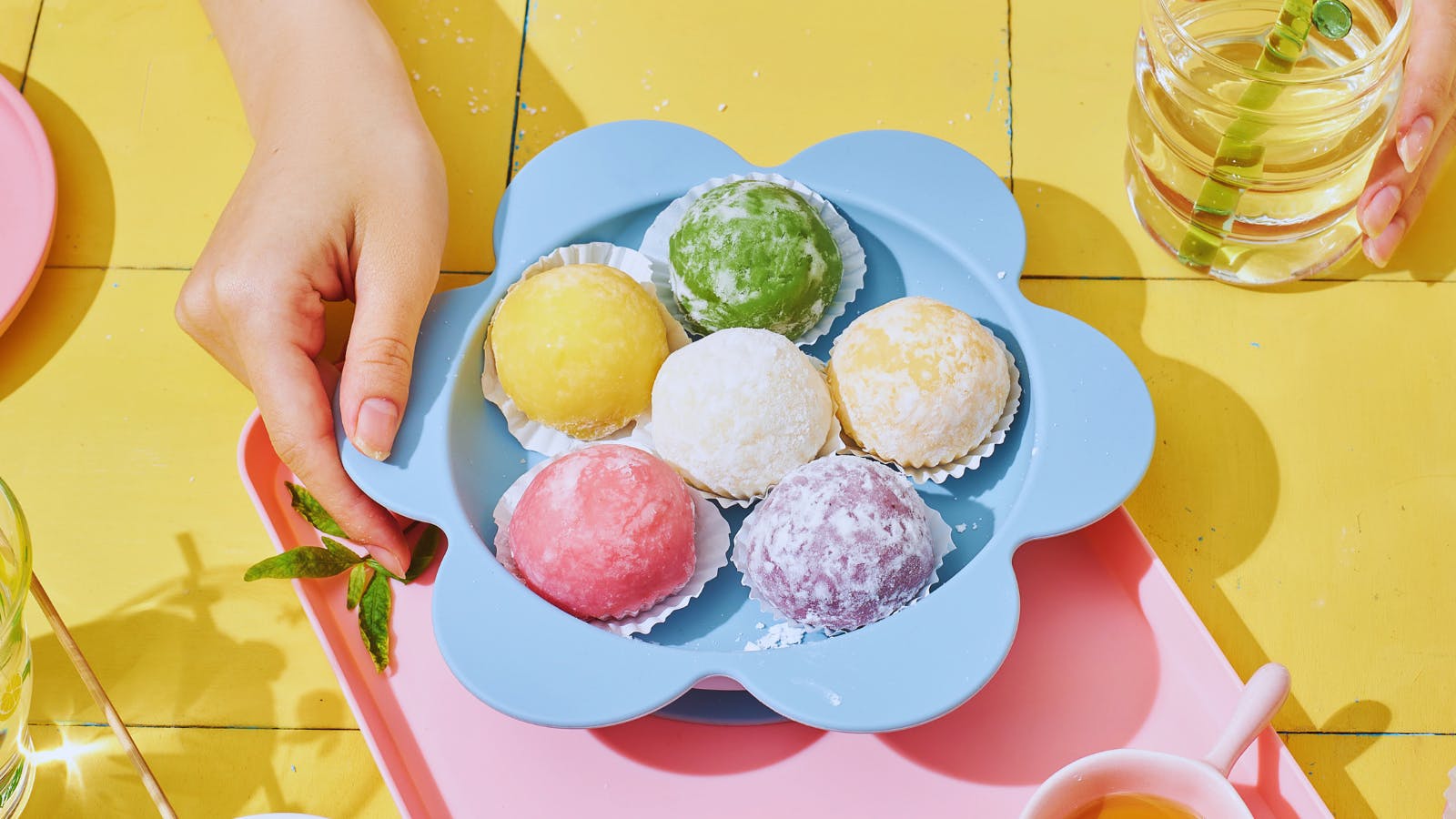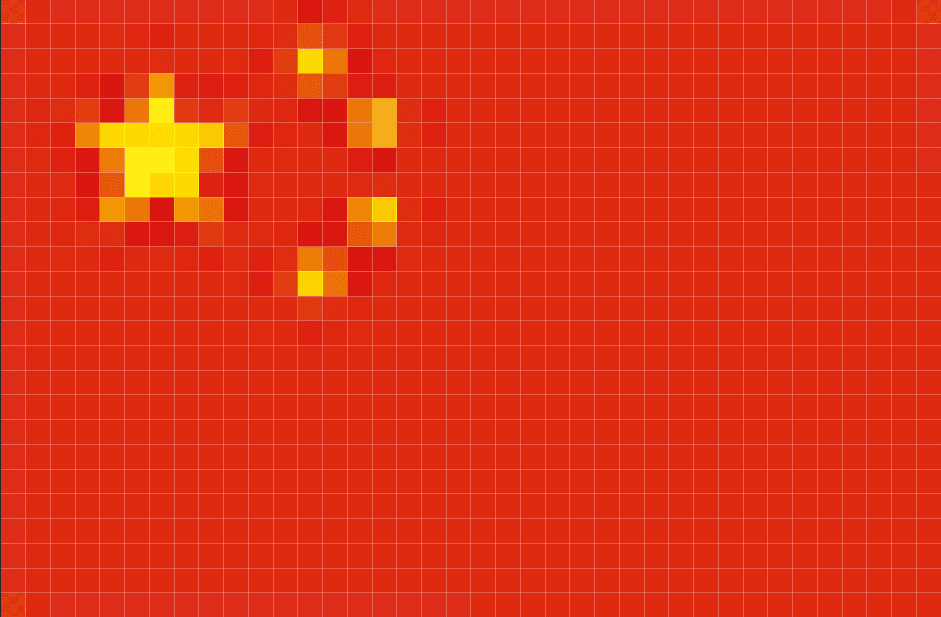your cart
Your cart is empty.
General Articles
What is Mochi? The Ultimate Guide
The ultimate guide to Japanese mochi, covering everything you’ve ever wanted to know about this sweet treat!

Mochi has seen a massive rise in popularity in the Western world in recent years, largely thanks to social media trends.
Here’s everything you need to know about the iconic Japanese sweet treats to get you well on your way to being a mochi aficionado.
What is Mochi?
Mochi refers to traditional Japanese rice cakes, an important cultural food dating back thousands of years. In Western countries ‘mochi’ tends to be used as a catch-all term for the different varieties, but in Japan, the actual word mochi may only be used to refer to the very traditional plain mochi in its basic form.
Mochi is typically enjoyed as a dessert or sweet snack, although it can be eaten with savoury ingredients. While it's now eaten year-round, traditionally, Japanese mochi was a celebration food eaten during festivals or special events to bring luck or show thanks.

How to Pronounce Mochi
A few different pronunciations of the word get thrown around by English speakers, but the correct way to say it is ‘moh-chee’.
What is Mochi Made of?
Mochi is made from a soft dough that, in many varieties, encases a filling. Traditionally, the dough is made from short-grain glutinous rice called mochigome. This rice gives the mochi its distinctive soft, chewy texture.
The dough can also be made from mochiko, which is a type of sweet glutinous rice flour made from mochigome – using the flour often involves a far less arduous process than the traditional mochigome method.
If incorporating a filling, the traditional option is anko, which is a sweet red bean paste. Nowadays, you can find a vast array of fillings and flavours available.

What Does Mochi Taste Like?
In its most basic form, mochi dough is neither particularly sweet nor savoury; instead, it has quite a neutral taste.
It is the fillings and any dough flavourings that add flavour and more distinctive tastes.
When shopping for mochi, you can find an impressive array of flavours, with sesame, chocolate, matcha, strawberry and much more to enjoy.
What is the Texture of Mochi?
The unique texture of mochi is part of what makes it so popular. It is soft, chewy and somewhat sticky. Some might describe the succulent texture as similar to a marshmallow, although it tends to be slightly more pliable.
How is Mochi Made?
The traditional art of making mochi is known as mochitsuki, which usually takes place around the start of the Japanese New Year.
The process involves soaking the rice overnight before steaming it, transferring it into a large mortar (known as an usu) and swinging a wooden mallet to pound it into the dough. This is a lengthy and physically challenging process, usually involving multiple people. When the pounded dough has the right texture, it can be removed from the usu and cut or formed into bite-sized balls or cubes.

As this traditional method can take a lot of skill and effort, the typical modern method for producing mochi is much simpler. Here, mochi is made from a premade glutinous rice flour that is mixed with water and heated until a sticky dough is formed, which can then be separated into balls or wrapped around a filling.
This is usually the easiest way to make mochi at home, but you can also find mochi machines that mimic the traditional process when using mochigome rice.
Is Mochi Vegan?
This will depend on which variety you get, as some options may use ice cream and other dairy products in the fillings. However, the simplest, most classic mochi (made with just rice and water) is vegan-friendly.
Is Mochi Gluten Free?
Again, watch out for different fillings, but basic mochi will be gluten-free. This is because it's made from rice or rice flour. Don’t be put off by the presence of ‘glutinous’ rice – despite the name, this rice does not contain gluten, instead referring to the sticky, glue-like consistency.
Is Mochi Halal?
Most mochi is generally considered halal, but make sure you check the ingredients list on shop-bought mochi in case of any unexpected additions.
Is Mochi Healthy?
Mochi itself is low in fat and cholesterol, and it’s a decent source of protein, so it can make a great sweet snack. The versatility of the food also allows you to explore different fillings and incorporate healthy options.
It can make a fantastic alternative to your usual high-sugar snacks, but as with everything, be mindful about eating in moderation.

What is Mochi Ice Cream?
One of the things that accelerated the popularity of mochi in the UK was the rising interest in mochi ice cream thanks to the 2021 viral social media marketing campaign for the brand Little Moons.
The popular mochi ice cream balls comprise a thin layer of mochi dough wrapped around a mouthful of ice cream. This is not a traditional Japanese filling, instead blending favourite desserts from Japan and the Western world.
Daifuku is probably the closest Japanese term to describe this kind of mochi. This refers to round mochi stuffed with a sweet filling – on this occasion the ice cream.

Different Types of Mochi
There are several different mochi variations, many involving different fillings, special additions and preparation methods.
- Daifuku: the umbrella term for round mochi that encases a sweet filling.
- Ichigo Daifuku: a popular daifuku variation that features a whole strawberry covered in red bean paste and mochi dough.
- Sakura Mochi: typically coloured pink and wrapped in a pickled cherry blossom leaf, these are popular during Hinamatsuri/Girl’s Day.
- Bota/Ohagi Mochi: inside-out daifuku that has chewy mochi on the inside and bean paste as the outer layer.
- Kinako Mochi: mochi dusted in a sweet powder made from soybeans and sugar.
- Hishi Mochi: diamond-shaped mochi arranged in three distracting layers of green, white and pink that’s also associated with Hinamatsuri.
- Kagami Mochi: two mochi rice cakes stacked on top of each other and topped with a daidai (bitter orange), which is a traditional Japanese New Year decoration.
- Hanabira Mochi: a thin disc of mochi folded into a semicircle over a bit of miso paste and burdock root that is often enjoyed at the beginning of a new year.

While many of us may think of mochi as a strictly dessert item (which it often tends to be), it can also be enjoyed as a savoury snack and incorporated into a range of dishes.
- Kirimochi: plain mochi, dried and cut into blocks that can be grilled or toasted and added to soups and other dishes or enjoyed with a dipping sauce.
- Isobe Mochi: grilled kirimochi, covered in soy sauce and wrapped in a sheet of nori seaweed.
What is Wagashi?
Wagashi is the collective term for traditional Japanese sweets made with authentic ingredients like glutinous rice and adzuki beans. These confections, such as different types of mochi, are often enjoyed alongside green tea and during traditional tea ceremonies.
Where to Buy Mochi
You can now buy mochi quite readily from UK stores as well as your local Japanese supermarket if you’re after a wider variety.
If, by now, you’re craving some mochi, check out our selection of flavours and brands! With fan favourites from Royal Family, Yuki & Love and Bamboo House, you’re sure to find something you love.
this site uses cookies
We and our advertising partners use cookies on this site and around the web to improve your website experience and provide you with personalised advertising from this site and other advertisers. By clicking allow, you accept the placement and use of these cookies for these purposes. Learn More






